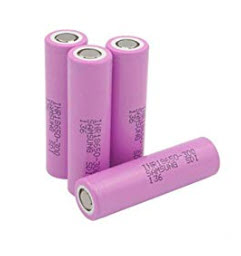The working guts of Li-ion batteries start as flat sheets. For many heavier-duty and general purpose applications, these sheets are rolled into cylinders because a cylindrical battery can be safer than a flat one:
- Stacked cylinders allow spaces between them, which can be used to keep hard-working batteries safely cool and responsive. Tesla autos circulate liquid coolant between their batteries, for example; electric Nissans use blown air to cool theirs.
- Cylinders are inherently stronger than flat packages, everything else being equal. Overstressed Li-ion cells can produce flammable, toxic gases; a cylinder can withstand internal pressures that might cause a flat-sided package to swell and deform.
Permalink: https://langa.com/?p=4771
![[seperator]](https://i0.wp.com/langa.com/wp-content/uploads/2019/02/SEPERATOR-short-grey.png?resize=104%2C6)
COMMENT / QUESTION on THIS ITEM? See the Comment box at bottom of this page!
NEW QUESTION? Ask here!
(Want free notification of new content? Click here!)

Li-Ion batteries can generate a lot of heat, especially when charging. I’ve observed this characteristic personally when performing testing and diagnostics on Android tablets.
simply put, “tradition”. Manufacturers could easily build heat sinks or cooling designs into square batteries. Why are AAA, AA, A, C, and D batteries cylinders while 9 volt batteries are all rectangles? Because most batteries were originally used in flashlights, which are cylinders. It pays to pack as much battery as possible into available space.
No one wants to be the first to design a battery that isn’t backwards-compatible, or a device that won’t fit most existing batteries.
Most arrays are exactly that–arrays made of several AA batteries. So it is cheaper to take available batteries and hook them together than to make a new small-run battery.
Which is why many batteries made explicitly for cars are cubic–so they don’t roll around, like lead-acid car batteries.
Laptop computers are an exception to that, where battery design is often proprietary. It’s often a matter of space allocation, where the computer manufacturers design the machine, and then the battery design is done at the end, to fit in whatever space is left in the case. I know that in the 1990’s either Duracell or Energizer was pushing the computer industry to do more standardization of battery designs (presumably, to make it easier for them to sell replacements), but they never really got any traction.